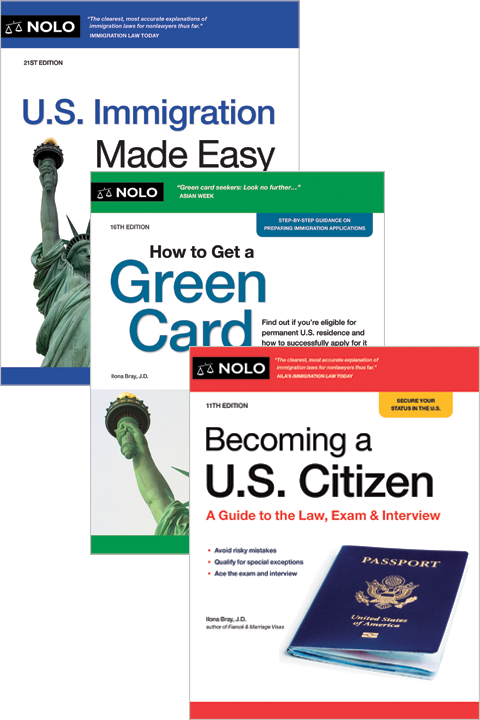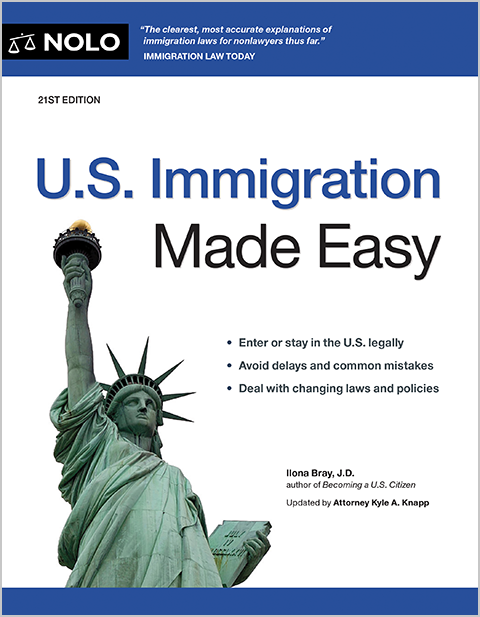If you've fled your home country and are afraid to go back, you might qualify for asylum or refugee status in the U.S.
Asylum and refugee status are legal protections available to people who have left their home country for their own safety and are afraid to return to any place within that country. (See 8 U.S.C. § 1158.) If you can relocate and live safely within your home country, you will not be able to demonstrate that you have a well-founded fear of persecution and will not be granted refuge in the United States.
Not everyone qualifies for asylum or refugee status, of course. Applicants must meet strict requirements, as described in this article. In particular, you would need to show two things:
- You are unable or unwilling to return to your home country because you have been persecuted there in the past or have a well-founded fear that you will be persecuted if you go back.
- The reason you have been (or will be) persecuted is connected to one of five grounds: either your race, religion, nationality, membership in a particular social group, or your political opinion.
Let's look more closely at the relevant requirements.
How Is Persecution Defined for Purposes of Applying for Asylum or Refugee Status?
To persecute means to harass, punish, injure, oppress, or otherwise cause someone to suffer physical or psychological harm.
U.S. immigration law does not list specific examples of the kinds of persecution that would qualify someone for asylum or refugee status. However, from the law that has been developed through court cases, we know that it can include such acts as threats, violence, torture, inappropriate imprisonment, or denial of basic human rights or freedoms.
Historically, for example, the need for asylum or refugee status has been recognized in situations where a foreign government has:
- imprisoned and tortured political dissidents or supposed undesirables
- fired weapons on protesters
- committed genocide against a certain race
- made sure that members of a certain religion were left out of the political process,
- and much more.
Even if a foreign government stands by while someone else commits acts of persecution (for example, if the authorities are unwilling or unable to exercise control while members of a vigilante squad gang up on gays and lesbians or while members of a guerilla group threaten or kidnap people who won't voluntarily join them), this too can qualify as persecution, which would support a claim for asylum or refugee status.
There is one type of persecution that is actually listed in the law: Being forced to undergo (or the fear of being forced to undergo) a program of "coercive population control." (See I.N.A. § 101(a)(42)(B).) This is aimed at victims of the kind of forced abortion and sterilization that takes place in mainland China.
Also remember that your fear of future persecution must be "well-founded." In other words, you will want to show that you have at least a one in ten chance of experiencing the feared harm. (See INS v. Cardoza Fonseca, 480 U.S. 421, 107 S.Ct. 1207 (1987).)
Meaning of the Five Grounds of Persecution
As mentioned above, the U.S. government grants asylum or refugee status to a person who has suffered or fears persecution that's based on one of only five grounds. The first three grounds—race, religion, and nationality—are fairly self-explanatory. Let's look at the remaining two—political opinion and membership in a particular social group.
Political opinion. Persecution of this kind means you hold opinions that the authorities don't tolerate, most likely critical of the government's policies or methods. Of course, you would need to show that the authorities know about your opinions—otherwise, they'd have no reason to come after you. It will help if you have, for example, spoken in public, written publicly about your criticisms, or taken part in antigovernment protests. People have proven persecution for political opinion based on having taken part in student demonstrations, been active in labor unions, advocated independence for a particular ethnic group, or joined an opposition political party.
You can also qualify for asylum or refugee status based on political opinion if the authorities mistakenly assume that you hold certain opinions, perhaps based on some other personal characteristic like your religion or family group. (This is called "imputed political opinion.")
Membership in a particular social group (PSG). This category is the most difficult of the five to define and is the subject of many legal arguments. A social group is described as a group sharing a common characteristic that is so fundamental to their individual identities that the members cannot—or should not be expected to—change it, the group has distinct boundaries for membership, and the group is recognized within society as a distinct entity.
Examples of particular social groups whose members have been accepted as asylees or refugees by the U.S. government include tribes or ethnic groups, social classes (such as educated elite), family members of dissidents, occupational groups, homosexuals, and members or former members of the police or military (who may be targeted for assassination).
In recent years, the U.S. government recognized persecution based on gender (usually based on the "particular social group" category). This allowed some women to gain asylum based on having undergone (or fearing they'll be forced to undergo) cultural practices such as female genital cutting, forced marriage, or domestic violence. However, under the first Trump Administration, this recognition was significantly rolled back, and might be again.
If applying for asylum based on your membership in a particular social group, be aware that the laws governing membership in a particular social group are subject to change. Under the first Trump administration, many groups that were previously considered particular social groups no longer qualified, and early indications are that the second Trump administration might try to do away with the PSG ground altogether.
Needed Nexus Between Persecution and One of the Five Grounds
It's crucial to remember that the persecution must be connected to one of five grounds—race, religion, nationality, membership in a social group, or political opinion—discussed above. For example, violence directed against gays and lesbians is recognized as persecution connected to membership in a social group. But violence against an individual who happens to have angered a local criminal does not have the necessary connection to one of the five grounds, so the victim wouldn't be eligible for asylum or refugee status from the U.S. government.
What's the Difference Between Asylum and Refugee Status?
Given the overlap between the legal definition of a refugee and asylee, who should seek asylum status, and who should seek refugee status? It's simply a matter of where you are when you apply.
People outside of the U.S. must apply for refugee status, typically through the U.N. High Commission for Refugees. (They cannot specify that they'd like to go the U.S. or any particular country, however.) An annual limit is placed on total approvals, by the U.S. President. That number went to then-record lows during the Trump Administration (15,000 per year). The Biden Administration raised it to 125,000 for 2023 and 2024, but the second Trump Administration slashed it to zero (by a January 20, 2025 Executive Order, though this is being challenged in court). So far, his administration has only brought in white South Africans (Afrikaners) as refugees, for the first time ever, per an Executive Order dated February 7, 2025.
People who have already made it to the U.S. interior can normally apply "affirmatively" for asylum status. They would need to do so within one year of arrival (with some exceptions, such as for changed circumstances). However, the second Trump Administration has added a major bar, ordering that anyone who enters the United States unlawfully on or after January 20, 2025 (the order date) cannot apply for asylum or other immigration relief. (Expect legal challenges to come.)
In theory, people who arrive at a U.S. border can also request asylum. However, the second Trump administration is trying to make that impossible, as well. For details, see Requesting Asylum at U.S. Border? What to Expect at Credible Fear Interview.
If You Think You're Eligible for Asylum in the U.S.
If you think you're eligible for asylum in the United States—that is, you are located there at the moment, and you have experienced persecution based on one of the five legal grounds—you still need to prepare an application, which is due within one year of your arrival (with exceptions).
You will also need to supplement your application with evidence proving your claim. You can use your own testimony, statements by witnesses, newspaper and other reports discussing your case or the human rights situation in your country, expert witness statements, and more. See Preparing Persuasive Documents for Your Asylum Application for details.
Until recently the U.S. government didn't charge a fee to file the asylum application (Form I-589), but a $100 fee was added via the 2025 budget reconciliation bill, with another $100 added for every year the application is still awaiting the government's decision. No fee waiver is available, not even if the applicant is low-income. There are other costs associated with the process as well, as described in Applying for U.S. Asylum: How Much Will It Cost?.
Also realize that you can meet the above criteria and still be refused on other grounds, as explained in Bars to Receiving Asylum or Refugee Status. For in-depth information on asylum and refugee protections and all key immigration law issues, see U.S. Immigration Made Easy by Ilona Bray (Nolo).
What Rights Do Asylees and Refugees Gain in the U.S.?
Once granted either refugee or asylee status, you can in theory stay in the United States indefinitely. Asylees and refugees are given permission to work and are allowed to apply for a green card within one year of either entering the United States as a refugee or being approved for asylum. Nevertheless, asylee status can be revoked if conditions in the home country change such that it's safe for them to return.
Also see Rights and Available Benefits After a Grant of Asylum.
Getting Legal Help
Determining eligibility and applying for asylum or refugee status isn't easy. Start by talking with an experienced immigration attorney, if possible. Some nonprofit organizations will provide free or low-cost attorneys to low-income applicants.
Talk to a Lawyer
Need a lawyer? Start here.
How it Works
- Briefly tell us about your case
- Provide your contact information
- Choose attorneys to contact you
- Briefly tell us about your case
- Provide your contact information
- Choose attorneys to contact you

